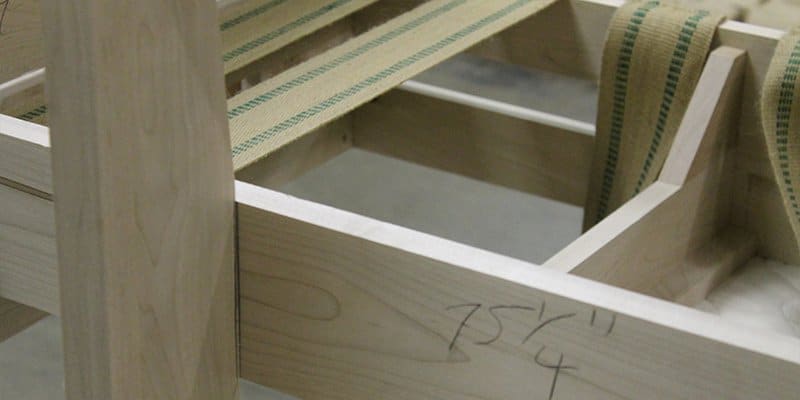How can you tell whether a new sofa is built to last or will wind up on the curb? First, it’s important to know that there’s no reason a sofa, loveseat, armchair or chaise shouldn’t be in your family for generations. It all depends on the materials used and the quality of the construction.
Most elements of sofa construction are not visible to the consumer, but they can make the difference between a piece that will last a few years and one you can hand down with pride.
Any factory can assemble cheap woods, particle board, cardboard and veneers with loads of glue, and when you first try it out, that lightweight sofa might feel sturdy enough. But with use, sags and squeaks develop and in some cases even the entire frame will develop an unwelcome wobble. It’s not only played-out cushions that destin sofas and other upholstered furniture for the landfill—it’s poorly-built frames.
The Best Wood for Sofa Frames
Just as your bones hold up the rest of you, a sofa’s frame supports the entire construction—plus the weight of all the people who sit, play or rest on it for years of use. The best, strongest wood is regionally-grown, sustainably harvested hardwood, not softwood such as pine. Kiln-dried hardwood is the most reliable choice for durable sofa frames and feet.

Sofa Joints Built to Last
Traditional standards are nearly unheard-of today for most sofas and couches, which are built with far more staples than actual carpentry. But if you want a connection built to hold, nothing beats the traditional mortise-and-tenon joint that has been in use for 7,000 years. Simple, strong, and extremely reliable, the mortise-and-tenon is trusted for enduring strength not just by skilled carpenters, but even blacksmiths and stonemasons.
A high-quality sofa will rely less on staples and more on old-school joinery at all key stress points. Strong, natural jute webbing will increase the integrity and performance of the frames.
A Word About Furniture Glue
Glue is vastly overused in modern furniture construction. It’s cheap and fast for manufacturers, but relying on it too much or in too many areas sets a low standard for long-term durability. More importantly, high-formaldehyde glues and adhesives are one of the biggest sources of chemical off-gassing from furniture—and they’re toxic to your body.
Where an adhesive is required, a low-VOC, water-based emulsion will not endanger your health with off-gassing fumes. The best furniture glue options will be certified by GreenGuard, the best-known independent testing and certifying authority. Products that are certified GreenGuard GOLD meet the most restrictive standard for low chemical emissions.
